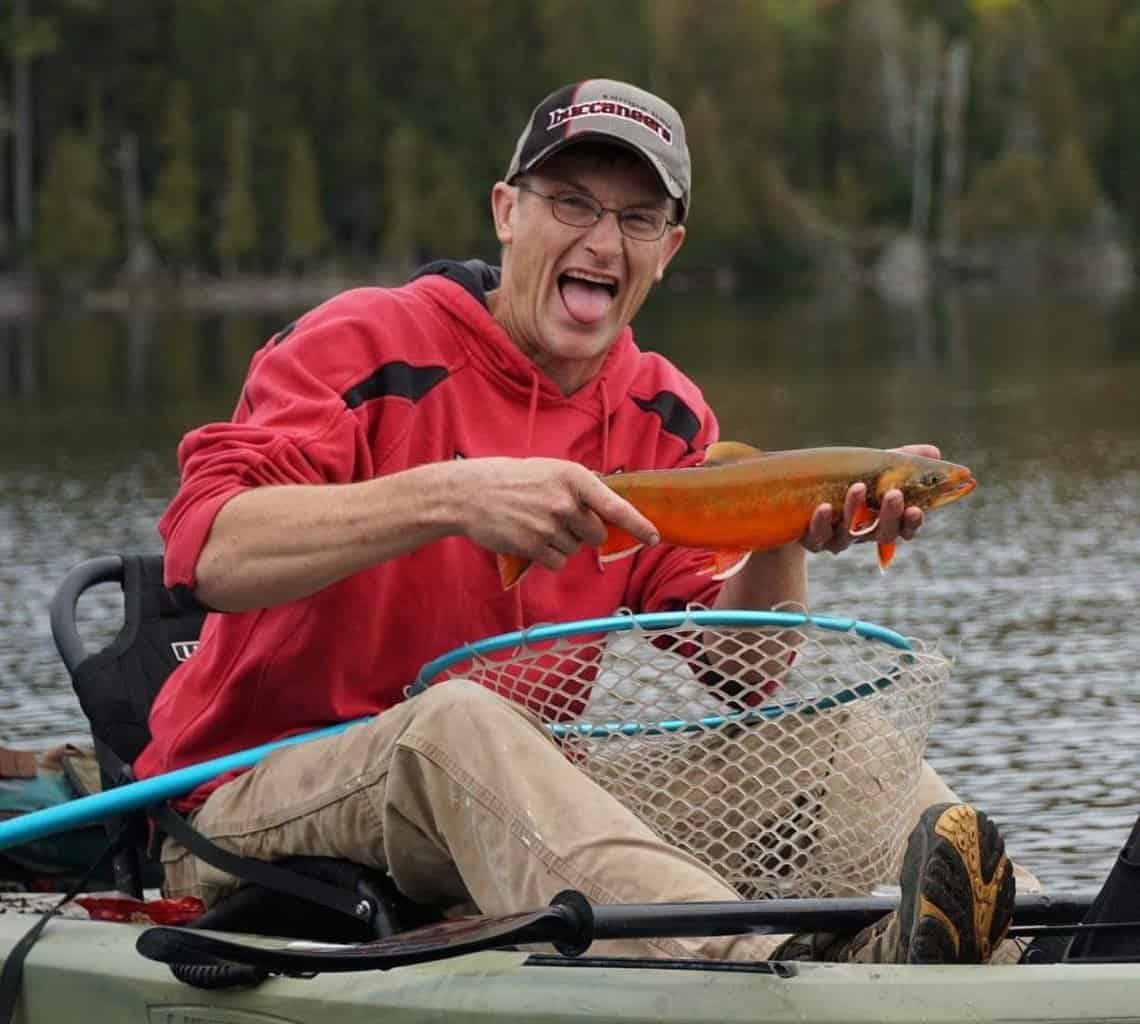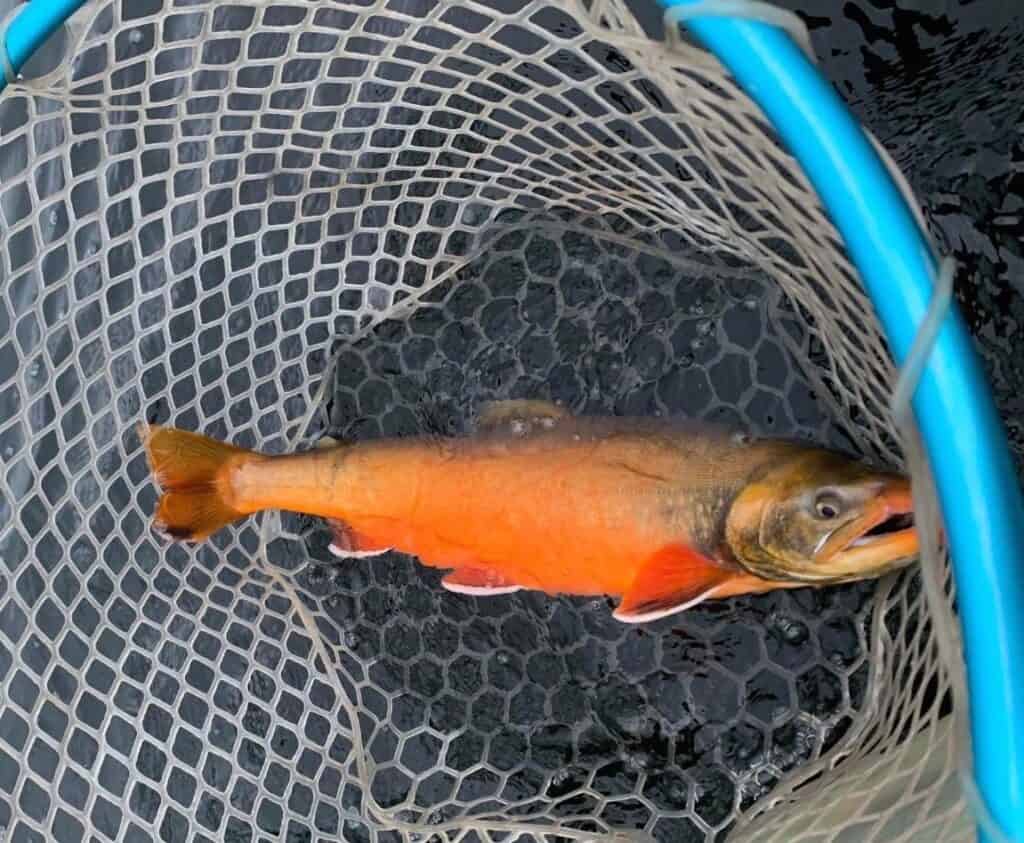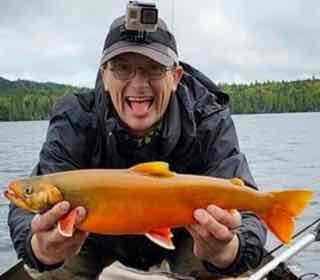Stan Williams is obsessed with catching a fish few people know even exists in the Lower 48 states.
Every year the 41-year-old residential contractor from Howland, Maine, heads north and becomes a prospector for these most elusive native species.
And in just a short time, Williams has caught more large charr than most anglers south of the Arctic would see in a lifetime of fishing. He shared a few of his secrets with us about where and how he catches these fish. And kept a few secrets to himself.
Arctic charr are among the most beautiful fish you will find anywhere, and in the contiguous United States, they are among the hardest to even reach, let alone catch.
Native charr have been holding out in more than a dozen ponds in the far reaches of Maine, so far upstate that they are more than 200 miles north of Toronto, Canada.
We should note that this fish is commonly spelled “char” in other places. In Maine, many anglers and fisheries people simply call them charr, without attaching “Arctic” to its name. Other local names for the same fish are “bluebacks” and “Sunapee trout.”
The Maine charr is part of a larger family of char closely related to trout and salmon, including the much more common brook trout, also native to the northeastern U.S.
Elsewhere in their range, Arctic charr are the northernmost freshwater fish species worldwide.
Surveys have found these fish in water as cold as 1 degree Celsius, at depths of more than 1,000 feet, and inhabiting bodies of water often covered in ice year-round. Eskimos and others have depended on this species as a food source since people settled in the Arctic regions.
The thing that strikes people first about this species is the coloration. Charr appear in a relatively pedestrian combination of white and silver with blue-tinted backs in the winter, spring and summer months.
Then boom, they turn a brilliant orange in the early autumn when they begin to spawn. Males are typically brighter, although both genders experience a color change.
Individual fish will change colors in various ways, exhibiting bright orange fins with crisp white edges, showing white-yellow spots, and displaying brown and blue dorsal sides and even yellow and orange ventral sides.
To be clear, Maine is a state so large that it has different personalities. Southeastern Maine is a short day trip from Boston, a favorite stop on New England tourists’ itineraries. It’s a land of lobsters and lighthouses, the Maine of postcards.
But charr are found in a different Maine altogether. Williams targets charr in lakes like Deboullie Pond, in the remotest interior of the state more than five hours north of Portland. So you might say they’re in an entirely different state of mind, even if they’re technically in the same state.
According to Williams and the Maine Department of Fisheries and Inland Wildlife, only 14 ponds in the state have a self-sustaining population of native charr.
This cluster of Northern Maine lakes is the last holdout of these native fish anywhere in the lower 48, although a Colorado reservoir at 9,000 feet elevation in the Rocky Mountains is home to stocked Arctic char.
Now, imagine you’re traveling for seven hours to one of a handful of ponds that have any of these wild charr. You’d guess that with that kind of effort these fish must, at least, be enormous, right?
Wrong.
Listen to this: A Maine study found that a two-year-old charr averaged 6.5 inches in length, a three-year-old fish averaged 7.3 inches, and a four-year-old fish averaged just 8 inches.
That’s what makes Williams multiple catches of trophy charr you see in these photographs all the more impressive.
These slow-growing fish are descendants of anadromous (sea-run) charr that populated the coastal region more than 11 thousand years ago, at the end of the Ice Age. The Maine charr of today is landlocked, living their entire lives in these ponds.
How rare are these fish? The Maine Department of Inland Fish and Wildlife classifies them as a Tier-1 species of greatest conservation need.
Williams is a seasoned angler but a relatively new convert to the pursuit of charr. In his second year of chasing them, according to his records, he’s landed 32 charr weighing better than two pounds.
As he’s learned their behaviors, he has found that in September and early October, when they’re spawning, charr are usually suspended in depths between 20 and 50 feet.
“Nobody catches these fish,” he says, talking about the rarity of anglers who go to the trouble of finding and targeting charr. “It’s a minority of a minority who catch bigger fish.”
Williams plans to get replicas made of both fish better than 20 inches that he’s landed and released since he began fishing for charr.
Williams says he has met anglers who have been targeting charr during spawning season for as long as seven straight seasons without a single hookup.
He says that he knows that a few of the ponds that he fishes have trophy-sized charr. Pushineer Pond is in the books for having produced the state record, a 5.24-pound, 25.4-inch fish landed in 2008. Nearby Deboullie and Black ponds also potentially have record-sized charr, he believes.
The charr primarily feed on insects, invertebrates, smaller fish, and even occasionally on shellfish or crustaceans. That diet makes targeting them with flies or other artificial lures all the more difficult.
These fish typically spawn on shallow flats when the water temperatures fall between 44 and 57 degrees. In Maine, the spawn usually occurs between late October and early November.
“Once you catch one of these, the excitement comes from seeing another angler get their first charr,” he says. “I’ve seen four people catch their first one and the fist bumps, the high fives, the grins that you’ve never seen on a person’s face before… It’s a dopamine hit like you’ve never had.”
While Williams hesitated to give exact patterns for charr flies, he did offer hints on what works. “Down deep, all they can see is black and purple,” he says, “so I can take a simple fly and add a little bit of purple dubbing, and it will make a difference.”
Williams even will tie flies while fishing to create a pattern in response to fish behavior. “That’s how you get to be better at adding weapons to your arsenal,” he says. For example, if a specific color is producing, he’ll have materials on hand to tie more flies in a similar pattern.
He’s careful to mimic the forage in the pond, whether he’s targeting brook trout or charr.
“It will vary from pond to pond,” he says. Sometimes there are a lot of baitfish, sometimes there are huge leeches, sometimes you’ll see nothing but crayfish,” he says. “If you go to a pond with nothing but one lure, that will be your downfall.”
But charr, once you find them, can be aggressive, opportunistic fish. According to Orvis News, researchers have documented charr consuming more than 30 different species of vertebrates and invertebrates.
Streamers and egg patterns have both proven successful in the past.
Williams caught his first fish as a young boy while fishing with his grandfather. Since then, he’s fallen in love with the sport, often pursuing more common brook trout and smallmouth bass.
For the past couple of years, he also has traveled down to Upstate New York to chase steelhead in the Salmon River, a tradition he’s continuing this autumn.
But ever since discovering charr, he says that he lives for the short period of the autumn when these fish are spawning, and he gets to target them.
Growing up, he first heard about these fish, which locals call “bluebacks.” After that, catching charr became ingrained in his life’s fishing to-do list.
And while targeting arctic charr might be so rare that most of us will never have a chance to do it, from listening to Williams, it’s clear it has something in common with every other type of fishing.
“I still think about the one I lost,” Williams says the night he returned from his most recent annual trip. “It gave me a two-and-a-half-minute fight from hell; it was under the boat for 40 seconds, my rod was bent right into the water, I even got to see the fish…”
His voice trails off. Every angler knows how the rest of the story goes. The rod straightening, the split second of suspended disbelief, and the wondering what you might have done differently.
Those moments, as much as the ones filled with beauty, color, and elation, are the ones that ensure we’ll all keep returning to make cast after cast in pursuit of our favorite species.
In the end, at some level, it almost doesn’t matter whether they’re some of the rarest fish in the world or ones we only have an opportunity to catch once or twice a year. The adventure, beauty and heartbreak will always keep us coming back.



